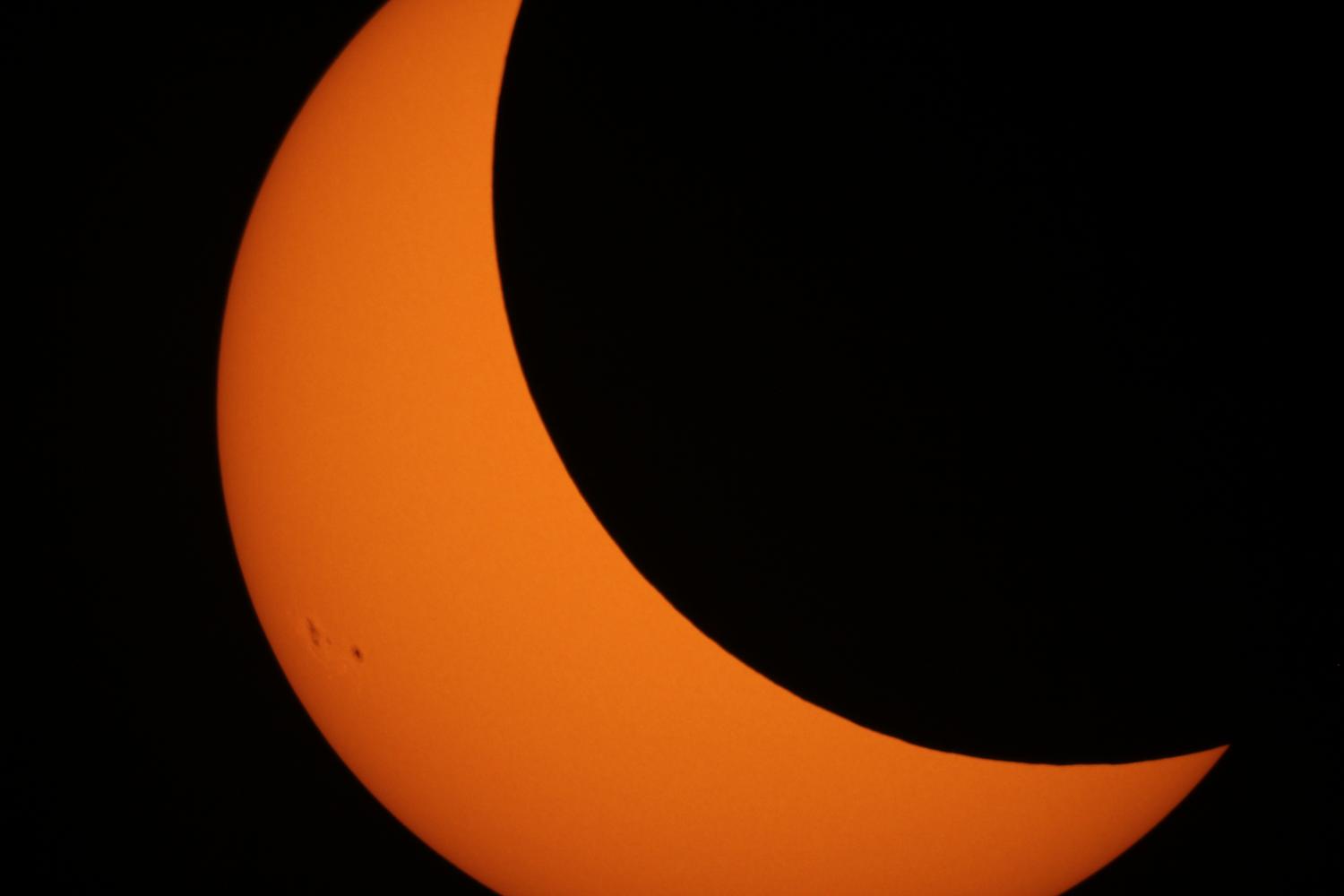The Great American Eclipse of 2017
August 30, 2017
As a professor of astronomy, Joe DalSanto knew a total eclipse would have a dramatic visual impact on the sky. He didn’t know it would have an equally dramatic impact on him.
DalSanto, who witnessed the event that day under Carbondale’s clear skies, says the experience was surprisingly emotional. “I was deeply affected and became very quiet while others were cheering and celebrating. Some were moved to tears. We were all surprised by how much we were affected emotionally.”
“This was the supreme natural phenomenon to witness,” COD’s own Joe DalSanto enthusiastically recounts of last week’s solar eclipse. DalSanto, COD’s own Professor of Astronomy, traveled to Carbondale to witness the moon completely eclipse the sun, the moment known as totality, along with thousands of so-called ‘eclipse chasers’ across the nation who wanted to revel in the ephemeral moment that some people can only experience once in their lifetime.
Back at the College, hundreds of students, faculty, staff, and visitors were visibly moved by the event as everyone came together to view the cosmic alignment of the sun, the moon, and our planet. COD’s Astronomy Department made quite the event of the natural phenomenon, which last occurred in US skies in 1979. To witness the spectacle, hundreds of people set-up in the atrium and on the COD grounds, wearing department provided solar safety glasses and a telescope for viewing.
As the event itself started, the group stared up at the sky to see the sun giving off a breathtaking orange glow. An audible, almost serene silence traversed throughout the campus as the path of the moon in the skies above COD covered about 90 percent of the sun. Despite the sporadic cloud cover which persisted on throughout the event and into the afternoon, the sight was awe-inspiring.
However, arguably more astounding than the event itself was the way people watched and reacted to it. For an afternoon, the nation set aside any and all of its superficial divisions to stare up at the sky and witness a rare and natural beauty.
And even for those who did not have the chance to witness the event firsthand or did not care to, Dal Santo argues that it still holds great importance. “This was the supreme natural phenomenon to experience. If we care about the other natural experiences here on Earth – the Grand Canyon, the giant redwoods of California, volcanoes of Hawaii, glaciers, rain forests, – this one exceeds them because it is larger than our world. This puts a human into contact with the motions of [the] Moon and Sun directly.”
Do not fret, however, because, despite the rare nature of the event, the next total solar eclipse is scheduled to be visible over the US again. Seven years from now, the path of totality will cross over Carbondale’s skies for a second time — a very impressive feat which, in DalSanto’s words, “gives us direct context and shows us how small we really are. It is a humbling experience that enriches life enormously.”


















